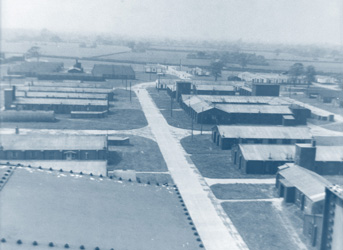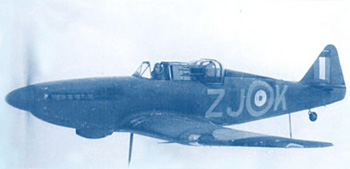R.A.F. Cranage News
 R.A.F. Cranage (known locally as Byley airfield) was one of many “only for the duration of the war” airfields built to support the war effort. Originally acquired for use as an aircraft storage facility and as a relief landing ground for No.5 Flying Training School [F.T.S.], the land was quickly passed over to No.2 School of Air Navigation [No.2 S.o.A.N.] who needed to move from R.A.F. St. Athan, South Wales, out of the way of the far reaching German Luftwaffe.
R.A.F. Cranage (known locally as Byley airfield) was one of many “only for the duration of the war” airfields built to support the war effort. Originally acquired for use as an aircraft storage facility and as a relief landing ground for No.5 Flying Training School [F.T.S.], the land was quickly passed over to No.2 School of Air Navigation [No.2 S.o.A.N.] who needed to move from R.A.F. St. Athan, South Wales, out of the way of the far reaching German Luftwaffe.
During the early part of the Second World War the Air Staff found that very few bombers were getting anywhere near their targets, owing to poor navigation standards, particularly at night. Consequently, the primary task of the No.2 S.o.A.N., renamed the Central Navigation School [C.N.S.] at Cranage in 1942, was to raise the standard of practical air navigation and to train navigation specialists. By the time the C.N.S. moved to Shawbury in 1944 bombing accuracy had improved fivefold.
 Along with the numerous training exercises running day and night Cranage, along with Squires Gate, Blackpool was also the home of No.96 Squadron who took to the night skies defending Liverpool and Manchester against the German bombers during blitz of the north west of England 1940 - 1941.
Along with the numerous training exercises running day and night Cranage, along with Squires Gate, Blackpool was also the home of No.96 Squadron who took to the night skies defending Liverpool and Manchester against the German bombers during blitz of the north west of England 1940 - 1941.
Over it’s short period of use the airfield was also home to:
1531 Beam Approach Training Flight • Repair & Inspection Squadron, Service Wing • 14th Liaison Squadron, 9th U.S.A.A.F. • No.190 Gliding School • No.4 Aircrew Holding Unit • No.61 Maintenance Unit • 620th Engineers U.S. Army • No.1 Motor Transport Squadron • No.20 Personnel [families] Transit Camp
Vickers-Armstrongs built a ‘Shadow’ factory for the assembly of Wellington bombers just a few hundred yards south of the airfield. Once constructed, tested and approved the aircraft flew out of Cranage and were delivered to operational airfields across the U.K.
Tuesday 1 November, 2016.
There are a few changes coming folks. Thanks to Google I'm having to develop a new version of the web site to accommodate tablets (iPads etc.) and smart phones (smart? really?).
On top of this I'm continuing to recreate the gallery of photos by Arthur Woodhams so that you can see them in higher quality.
I have quite a bit of information about the Celestial Navigation Trainer tower that used to be building no.38 on the site plan.
I recently had an email from a local gentleman, Mr. Moss, who kindly offered me first refusal on some beautiful U.S.A.F. Air Base Cranage red binders that contain some adverts for local businesses. I will be photographing and uploading these in the revised layout/version of the web site.
Thank you all for your continued support and kind comments.
Craig Singleton
Looking west towards the main gate from the high level water tanks.
Boulton-Paul Defiant Mk.I T3996 ZJ-K piloted by Flying Officer Vlastimil Veselý, No.96 Sqn.

This web site has been created to show the history of one small airfield during the Second World War (WWII). It is also my own small tribute to all the men and women of the Allied Nations who gave so much in their contribution to victory in (WWII), throughout the world.
Craig Singleton - rafcranage.org.uk
All material on the web site is covered by copyright © 2010 - 2016